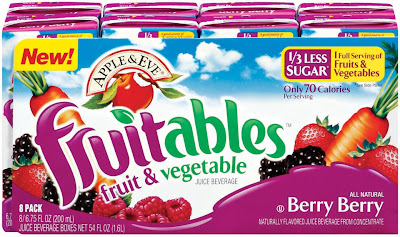This past year we saw an update of the U.S. Dietary Guidelines with a lifestyle approach that focuses on a total diet that is energy balanced and nutrient dense. The first Action item listed is to reduce the incidence and prevalence of overweight and obesity of the US population by reducing overall calorie intake and increasing physical activity.
Another concern is the rising incidence of diabetes both in adults and children. According to a report by the U.S. Centers for Disease Control and Prevention, the number of American adults with diabetes could double or triple by 2050 if current trends continue. This prediction is really depressing when you consider the growing number of children who already have the condition, once described as adult onset diabetes. To help control this trend, obesity in children will be a major focus this year and sugar a major target.
The food industry calls this a “quiet reduction” as sugar, especially high fructose corn syrups (HFCS) are covertly eliminated from foods and beverages. Consumer Packaged Goods says that as the media continues to demonize HFCS, what may start as a “quiet reduction” is likely to end up as a key labeling issue, in the same way “trans fat-free” has become the norm. Unfortunately, although no research has confirmed that HFCS is the cause of obesity and diabetes, the public perception is that it is the culprit. The bottom line is that our energy balance is off and sugar calories are adding to the imbalance.
Mintel predicts we’ll see sugar and stevia used in conjunction to achieve an overall lower sugar content in new products. Look for messages on labels that say “naturally sweetened” or “reduced sugar.”
 Examples of food companies that are reducing the sugar in their products quietly is General Mills that announced they will lower the amount of sugar in their children’s breakfast cereals to no more than 10 grams per serving from 11 grams a year ago. General Mills, which also sells Progresso soup and Yoplait yogurt, said it must reduce sugar in tiny, incremental steps, lest consumers notice the difference and stop buying their products. I must commend General Mills for taking out the sugar and not substituting natural sugar with an artificial alternative. Examples of General Mills cereals with lower sugar are Lucky Charms, Cocoa Puffs and Trix. Their goal is to get to a single digit level of sugar in all cereals advertised to children under 12.
Examples of food companies that are reducing the sugar in their products quietly is General Mills that announced they will lower the amount of sugar in their children’s breakfast cereals to no more than 10 grams per serving from 11 grams a year ago. General Mills, which also sells Progresso soup and Yoplait yogurt, said it must reduce sugar in tiny, incremental steps, lest consumers notice the difference and stop buying their products. I must commend General Mills for taking out the sugar and not substituting natural sugar with an artificial alternative. Examples of General Mills cereals with lower sugar are Lucky Charms, Cocoa Puffs and Trix. Their goal is to get to a single digit level of sugar in all cereals advertised to children under 12. SS Pick for 2010 Best New Product
Apples & Eve Fruitables Fruit/Vegetable Juice
In a colorful and appealing package, the wording states that there are no added sugars, high fructose corn syrup, artificial sweeteners, artificial flavors or artificial preservatives. The nutrition for one serving of Fruitables, 6.75 fl oz, is 70 calories, 0 fat, 10 mg sodium and 15 mg carbs, 9 g sugars. Apple & Eve has kept the calories (70) and sugars (9 g) low compared to other fruit juices (1 cup grape juice-150 cal, 24 g sugars; 1 cup pineapple juice-130 calories, 25 g sugars; 1 cup apple juice-115 cal, 24 g sugars) by diluting their fruit-veg blends with filtered water. As consumed, Fruitables are 66% juice.
There is a real lesson for kids here if they read the ingredient list because surprises abound: orange, yellow and purple carrots, sweet potatoes, butternut squash and beets – yes, beets – are all part of the yummy flavors. Rounding out the ingredients, depending on flavor, are more familiar favorites like raspberries, strawberries, kiwis and pears. This item comes in an 8-pack of juice boxes or a 46-oz, family friendly bottle, depending on flavor. For the youngest kids, there is a 4.23 fl oz juice box in apple-carrot flavor with a Sesame Street theme. Berry-berry, tropical orange and strawberry-kiwi flavors are healthy for kids whether in their school lunchbox or chilled in a cooler at soccer or ballet practice.
Is the food industry doing enough to lower the sugar in foods and beverages?
Do you think HFCS should be eliminated from food and beverage products?



No comments:
Post a Comment